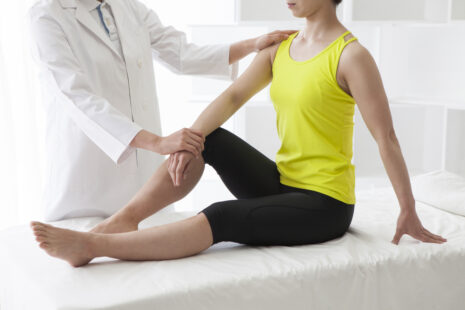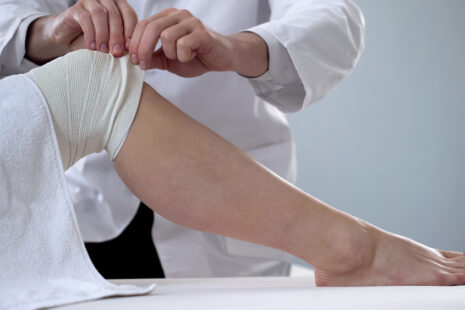Strengthening the muscles around the knee, particularly the quadriceps, hamstrings, and muscles of the hip and core, can help provide stability and support to the knee joint, which may help compensate for a deficient ACL (anterior cruciate ligament) and reduce the risk of instability or further injury. While strengthening exercises alone cannot fully restore the function of a torn ACL, they can be beneficial, especially for individuals who opt for non-surgical management or are awaiting surgery.
Here are some ways to strengthen your ACL without surgery…
- Quadriceps Strengthening –
- Straight Leg Raises – Lie on your back with one leg straight and the other bent. Lift the straight leg off the ground, hold for a few seconds, and then lower it back down. Repeat for several repetitions on each leg.
- Terminal Knee Extensions – Use a resistance band or cable machine to perform terminal knee extensions. Sit on a chair with your knee bent and the resistance band attached around your ankle. Extend your knee against the resistance, then slowly return to the starting position.
- Hamstring Strengthening:
- Hamstring Curls – Lie face down on a mat with your ankles hooked under a support. Bend your knees to bring your heels towards your buttocks, then slowly lower them back down. You can also perform this exercise using a stability ball.
- Romanian Deadlifts – Stand with your feet hip-width apart and hold a barbell or dumbbells in front of your thighs. Keeping your back straight, hinge at the hips and lower the weights towards the floor, then return to the starting position by squeezing your glutes and hamstrings.
- Hip and Core Strengthening
- Clamshells – Lie on your side with your knees bent and stack your hips and shoulders. Keeping your feet together, lift the top knee towards the ceiling while keeping your pelvis stable. Lower back down with control.
- Planks – Start in a push-up position with your elbows bent and forearms on the ground. Engage your core muscles to keep your body in a straight line from head to heels. Hold the position for as long as you can, aiming to increase the duration over time.
- Balance and Proprioception Exercises
- Single-Leg Balance – Stand on one leg with your knee slightly bent and maintain your balance for 30-60 seconds. Challenge yourself by closing your eyes or standing on an unstable surface.
- Bosu Ball Exercises – Perform exercises such as squats, lunges, or single-leg stands on a Bosu ball to challenge your balance and proprioception.
- Plyometric Exercises
- Once you have built a foundation of strength and stability, you can gradually incorporate plyometric exercises such as jumping, hopping, and bounding to improve power and agility. Start with low-impact variations and progress gradually as tolerated.
It’s important to consult with a physical therapist or healthcare professional before starting any exercise program, especially if you have a knee injury or instability. They can assess your condition, provide personalized recommendations, and ensure that you’re performing exercises safely and effectively. Listen to your body and avoid exercises or activities that cause pain or discomfort.



